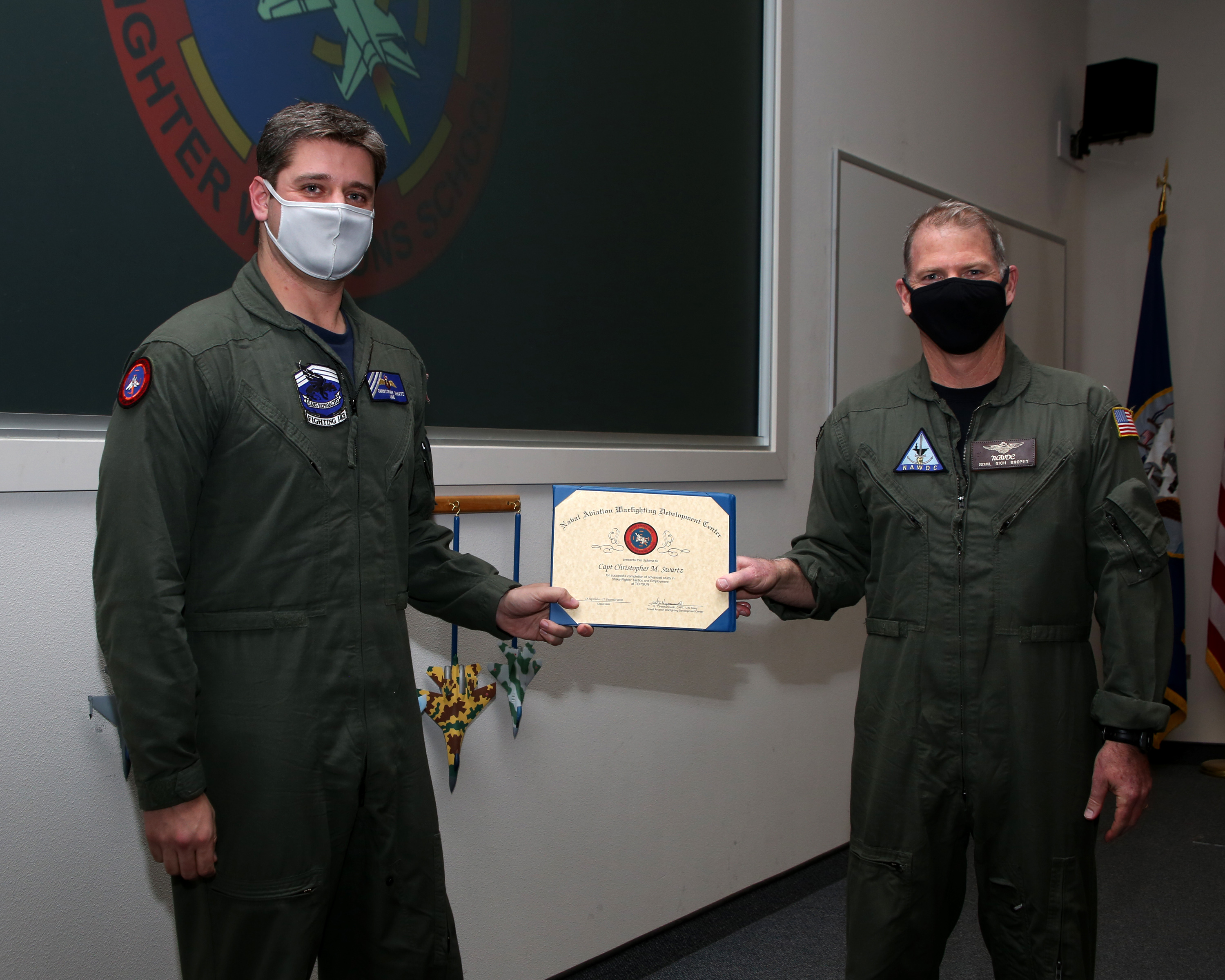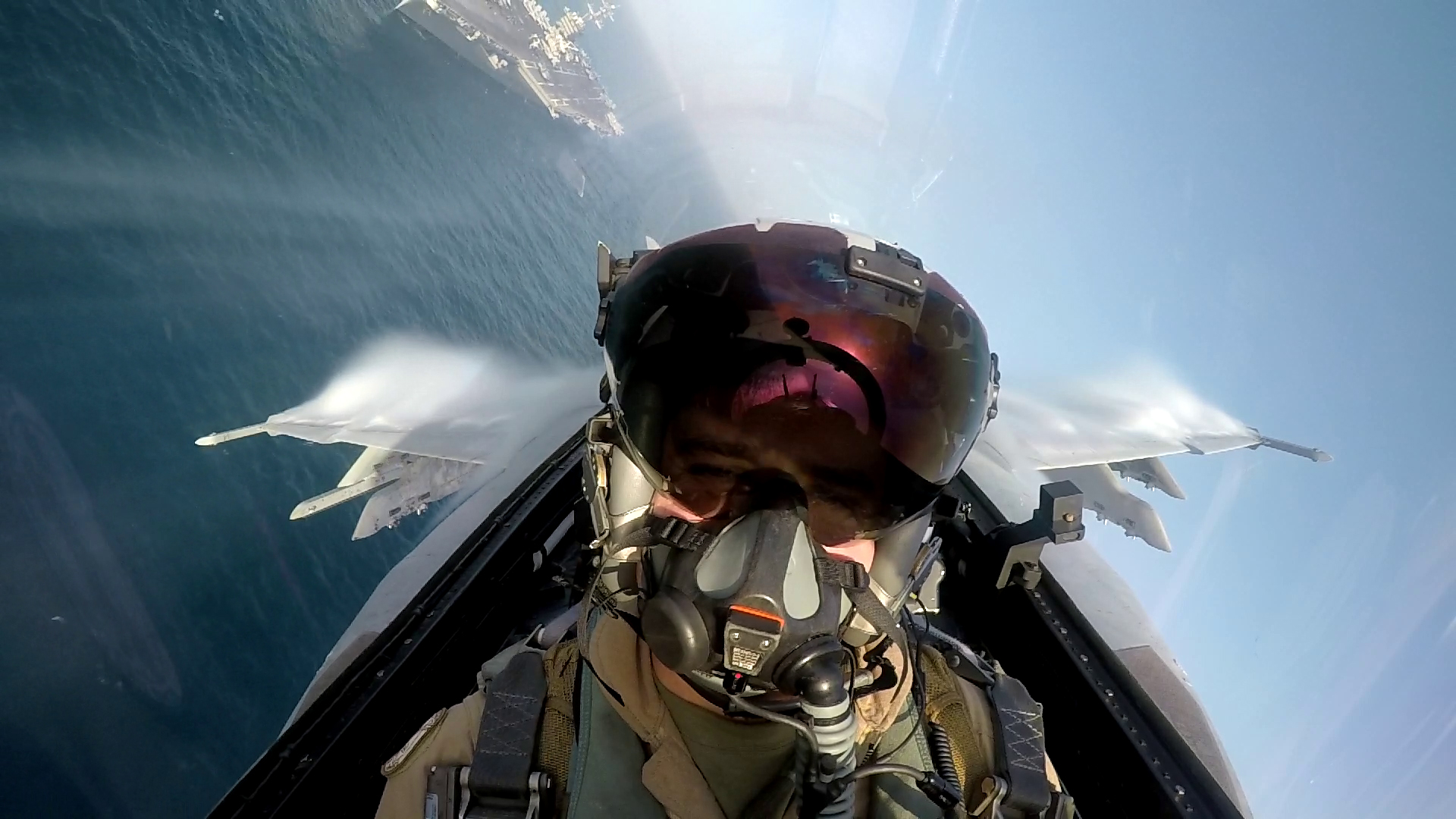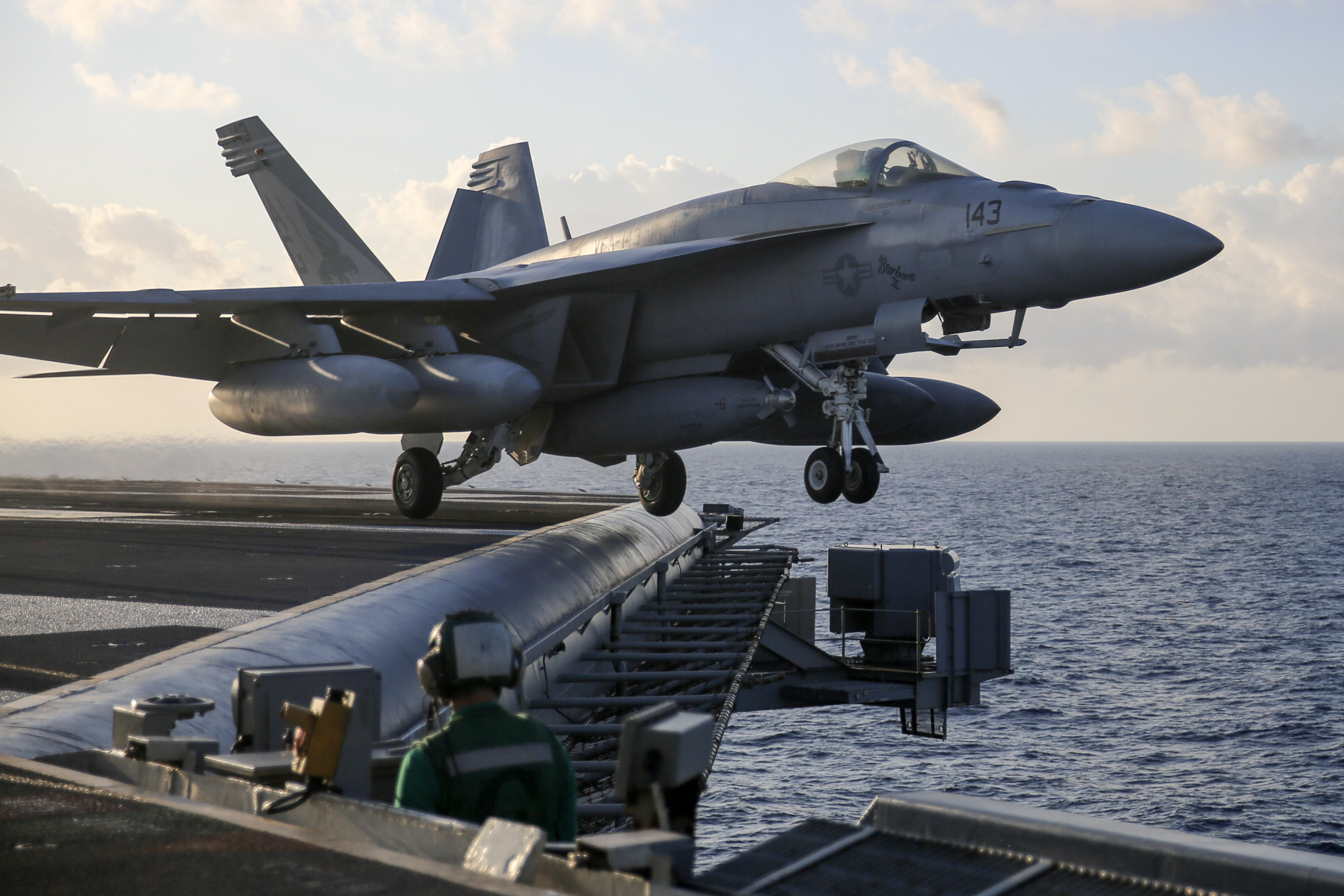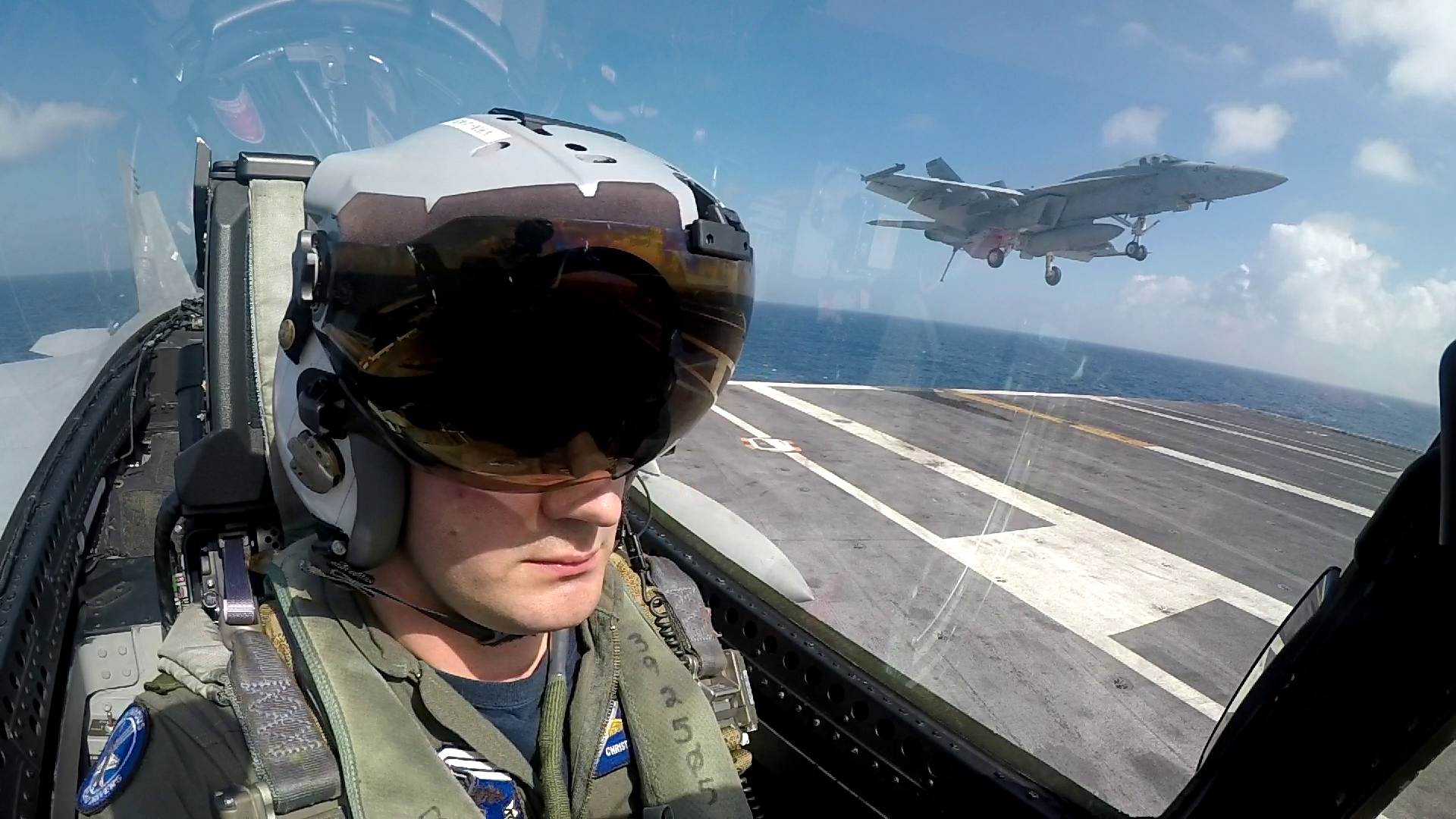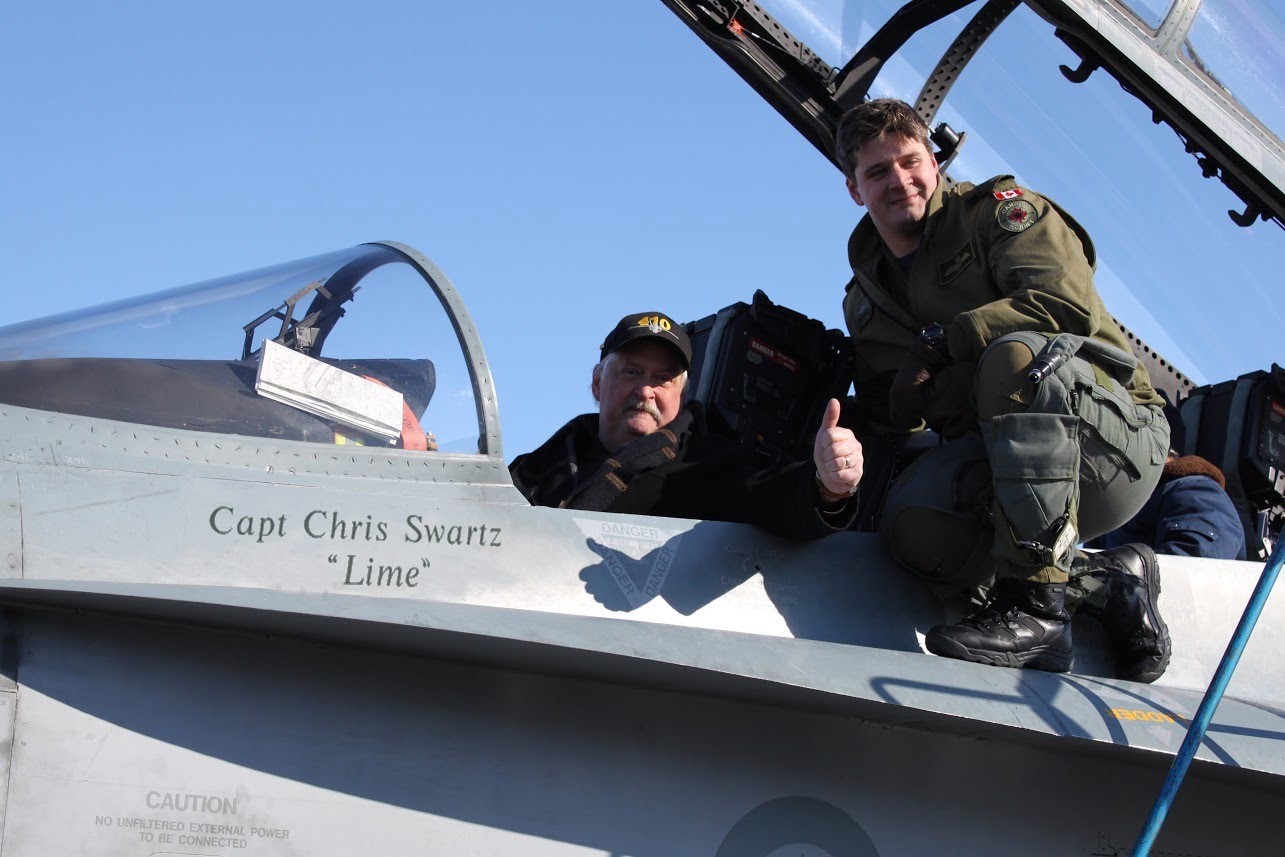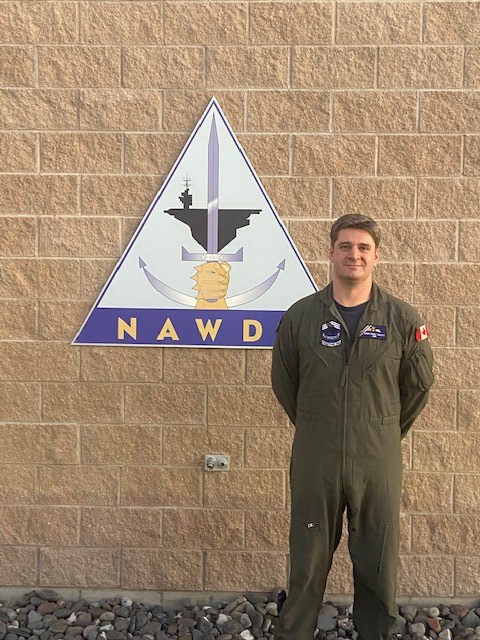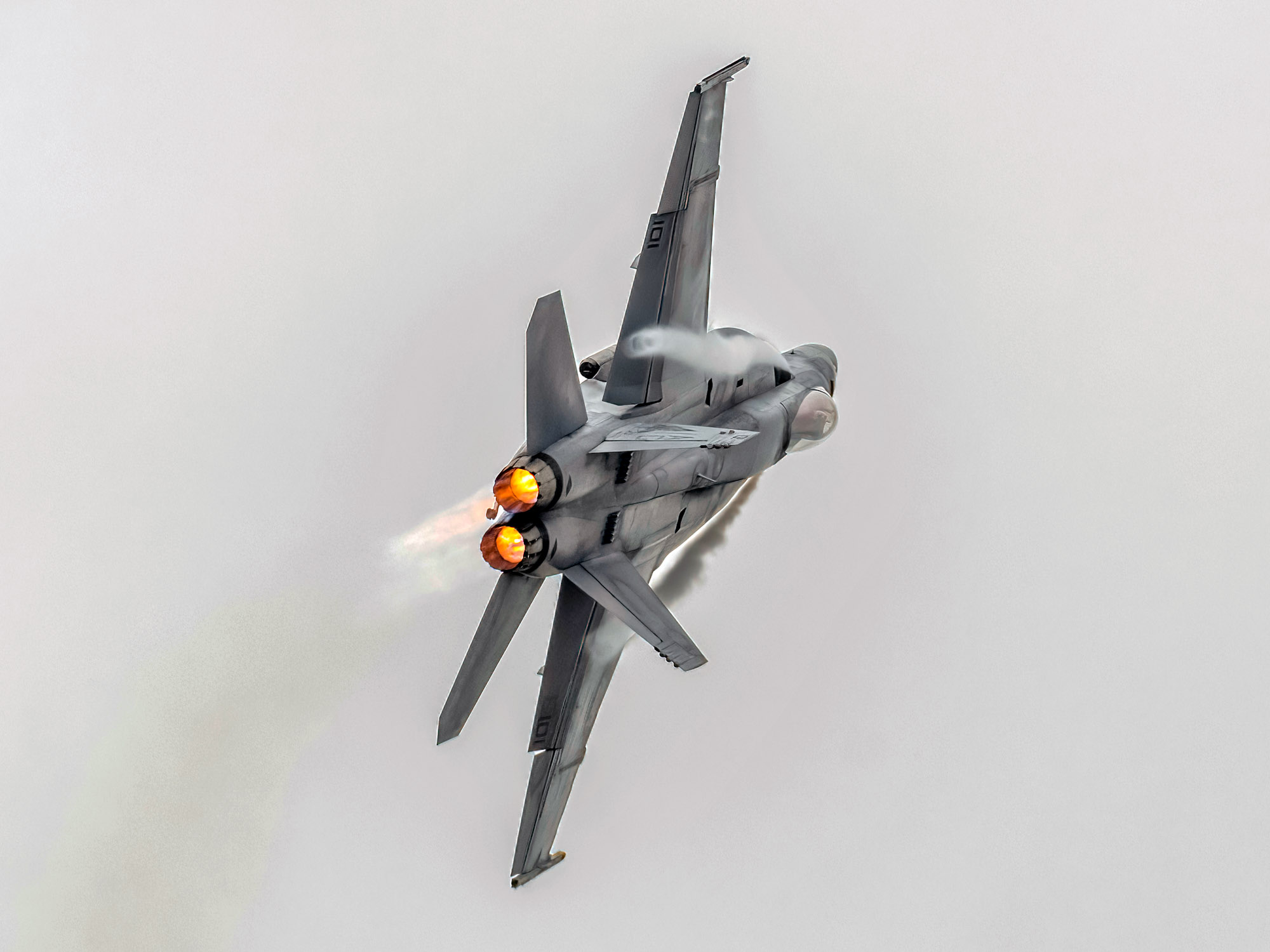Move over Maverick! Canadian Pilot graduates TOPGUN program
News Article / December 21, 2020
Click on the photo under “Image Gallery” to see more photos.
By Emily Lindahl
With so much skill and talent all throughout the Canadian Armed Forces, we often take for granted just how good our people really are. RCAF pilots operate at a world class level, and we have the TOPGUN patch to prove it.
On Tuesday, November 24, 2020, Captain Chris ‘LIME’ Swartz graduated from the United States Navy (USN) Fighter Weapons School - Strike Fighter Tactics Instructor program, more commonly known as TOPGUN.
As part of the virtual graduation ceremony, RCAF Major General Michel Lalumiere was invited to say a few words. He expressed his sentiments that are shared by RCAF leadership – the pride and excitement of Captain Swartz’s success. Thanking the US Navy for their leadership, MGen Lalumiere congratulated the graduates of TOPGUN class 01-21, and commended all participants for their hard work and dedication. He also spoke of the deep relationship shared by Canada and the United States at every level.
Capt Swartz has been in the USA as part of an exchange program with the United States Navy, along with an Air Combat Systems Officer (ACSO). Two additional aircrew – another pilot and an ACSO – are on exchange with the Royal Australian Air Force. The purpose of these exchanges is to get experience with advanced fighter aircraft to help facilitate the introduction of a new fleet in Canada, and is part of a larger exchange program where the RCAF looks to draw experience from our Allies across the range of military capabilities.
During his time in the USA, Capt Swartz made an impression with his US chain of command who nominated him for the TOPGUN program. This speaks to his calibre as a fighter pilot. The aircraft used in the TOPGUN program include a mix of F/A-18 E/F Super Hornets, and the F35C Lightning II (carrier variant), and throughout his TOPGUN training, Capt Swartz flew the single-seat F/A-18E Super Hornet. His operational exchange with a USN strike fighter Squadron means he can put his training to the test immediately.
While he acknowledges that the support of his classmates made the day-to-day challenges of being away from family a bit easier, Capt Swartz credits the staff and instructors of TOPGUN for his success.
“The instructors brief, fly, and debrief with us. Not only are they some of the best fighter pilots in the world, but they are also some of the best teachers and instructors I have had the privilege to learn from. Their professionalism and dedication to the training and development of Navy and Marine Corps aviators are second to none, and I was deeply honoured to have had the opportunity to fly and learn from such an amazing group. The instructors there are the reason the TOPGUN brand carries such a strong reputation throughout the US military, and among allied partners.”
The RCAF is incredibly proud of his efforts and the dedication he has shown to strive for excellence in his work. Alongside his three other colleagues also on exchange, this demonstrates that RCAF personnel operate on a world-class level, on par with our Allies.
In terms of the RCAF’s future fighter capabilities, which includes the Future Fighter Capability Project (FFCP) and the Hornet Extension Project (HEP), the RCAF is leaning forward to field not only the largest acquisition in 30 years, but also the most complex. The RCAF plans to leverage the knowledge in advanced jet operations gained by all four Canadians to facilitate our preparations and planning for the introduction of future advanced capabilities.
These types of opportunities allow Canadian fighter pilots to acquire advanced Fighter experience/exposure so they can assist with the implementation of the Future Fighter, whichever one eventually gets selected.
When asked about what he takes from his experience, Capt Swartz says that learning from “USN subject matter experts regarding various tactical aviation subjects,” was invaluable. He notes that the opportunity to see “how they develop, evaluate and publish tactical execution standards, and continuously revise and update these publications to ensure Navy and Marine Corps aviators remain the best in the world, shows just how much work these guys do.”
Capt Swartz joined the RCAF in 2006, earning his pilot wings in 2012. He completed fighter lead in training in 2014, after which he was posted to 425 Tactical Fighter Squadron in Bagotville Quebec, in 2015. He then deployed on Operation REASSURANCE, out of Germany and Operation IMPACT, from Kuwait.
In 2017, he completed F/A-18E Super Hornet conversion training at NAS Oceana, Virginia, and was subsequently posted to US Navy Strike Fighter Squadron 143 (VFA-143), based at NAS Oceana. As part of Carrier Air Wing 7 (CVW 7), the squadron completed a 10-month operational deployment aboard the Abraham Lincoln Carrier Strike Group from April 2019 to January 2020, the longest carrier deployment since the Vietnam War.
Adapting to landing and taking off from a carrier added a new set of challenges for the RCAF pilot who was used to typical runway operations. Comparing it to drag racing, Capt Swartz explained that “launching off a carrier is like nothing else, it’s a crazy ride. I am very thankful to the Landing Signal Officers (LSOs), whose support and training were instrumental in getting me up to speed on carrier operations, and in recovering the aircraft back aboard the boat safely.”
Capt Swartz will now consolidate his training with the US Navy by returning to his Squadron (VFA-143) in Virginia. While training frequently kept him away from home throughout his deployment, coming back to his wife between missions made all the difference. “She is my rock, my absolute hero,” he states. This Active Posting Season (summer 2021), the couple will be returning to Canada, where Capt Swartz is scheduled to work in the Fighter Capability Office.
This is an example of how we are actively seeking partnerships with Allies, such as the US Navy, and within aviation industries to help retain, attract, and grow experience within the RCAF. As a partner in NORAD and member of NATO, it is crucial that our members have the skills required to operate seamlessly with our Allies. In addition, it ensures that the RCAF remains an effective provider of air and space power for the Canadian Armed Forces and the Government of Canada.
Emily Lindahl is part of the Royal Canadian Air Force Public Affairs team.
